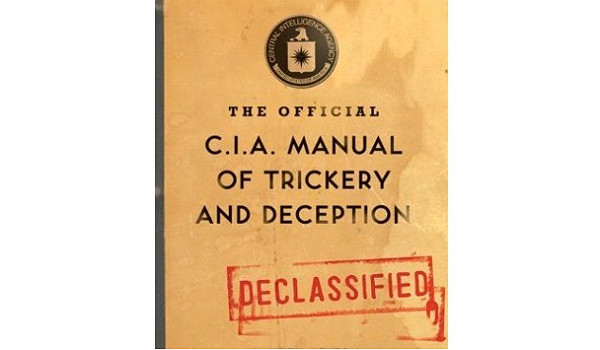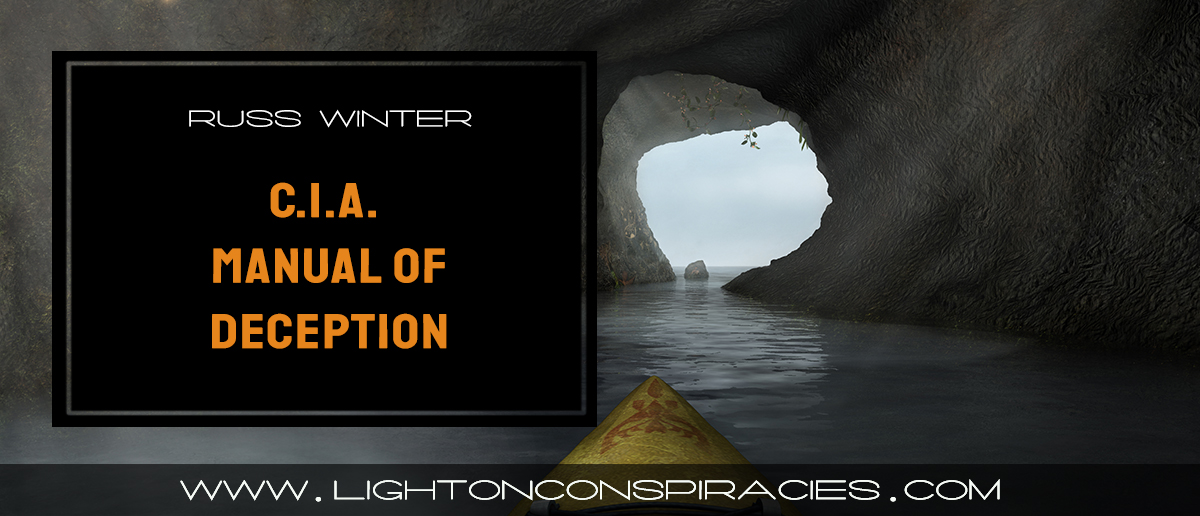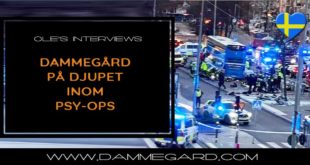
John Mulholland (1898-1970) was a highly successful performing magician who entertained “New York City society circles.” In 1953, the CIA paid him to write a manual on deception and misdirection. Copies of the document were said to have been destroyed in 1973 by CIA Director Richard Helms; however, it later resurfaced and was published as “The Official CIA Manual of Trickery and Deception.” The full text is available here.
His impact on the art of magic was enormous. He predicted an aspect that is surely in play a half century after his passing — specifically, that “any sufficiently advanced technology is indistinguishable from magic.”
John Mulholland instructed operatives that their success — as opposed to that of magicians — depended upon the fact that they are not known to be — or even suspected of being — tricksters. This points to the media as being a large factor and culpable in the stagecraft in the age of deception we are witnessing today.
The other aspect that the public doesn’t see is that tradecraft is practiced by a supranational entity, which Winter Watch refers to as the Crime Syndicate. The gullible pajama people can’t conceive of this, thus making deception a fait accompli.
Multiple elements of the magician’s craft can be seen throughout the world of espionage and deception, most notably in stage management, sleight of hand, disguise, identity transfer, escapology and special concealment devices.
Awareness and “management” of the potentially hostile environment, where audiences are culturally diverse, uncontrolled and sometimes unseen, is as critical to a operative’s success as his special devices. Similarly, a successful stage magician understands that the execution of a trick may not produce an effective illusion unless the stage and audience are consciously managed.
Sight lines, limiting what the audience is allowed to see, are arranged so that the magician’s trick may be executed without exposing secret equipment or maneuvers. Mulholland advises to carefully select each operational site for visibility. In the manual, he focuses a lot on angles and moving at right angles.
He offers that illusion is only a means to divert attention from a clandestine act. To be successful, the espionage illusion must withstand both the direct observation of onlookers (casuals) and the scrutiny of professional counterintelligence officers (hostile surveillance) without exposing either the participation or identification of the agent.
We see this constantly in the staged deceptions we cover. One of the more obvious illusion tricks is not revealing CCTV footage — or when revealed, blurring it. Examples would be CCTV cameras turned off at the Pentagon on 9/11. Also, the CCTV video footage of McVeigh’s truck in front of the Oklahoma City Murrah Building “is missing.” The public was told that four cameras in four locations went blank at basically the same time on the morning of April 19, 1995. The FBI claims the security cameras did not record just prior to the blast or during the blast, because “they had run out of tape” or that “the tape was being replaced.”
Read “The 9/11 Tale of the Pentagon’s Disabled Security Cameras“
Read “Reminder: French Authorities Ordered Destruction of CCTV Images of Nice Terror Attack (UPDATE)“
Read “An Analysis of the 2016 Brussels Airport ‘Bombing’“
For anybody observing these tricks, it is blatant what one is not allowed to see. For a basic example of this oft-repeated formula, look at a clip from NBC “News” titled “Drone Captures Video Of Car Plowing Into Crowd In Charlottesville.” As a viewer, ask yourself this question: Does this show the second car driven by James Alex Fields plowing into crowd?
Next, watch starting at the 20-second mark. Do you see evidence of people down, or just an impression? Look how the sight lines on the ground are blocked. Someone is still even carrying an unfurled blocking banner that reads “Against White Supremacy” after an alleged fatal incident. Mulholland in his manual frequently refers to using a body or other objects as shields, fully demonstrated in this example.
In the next video, yet again we have a herky jerky film and theatrics just when things get interesting at minute 0:23. Incredibly Finger Lady blocks the view by putting her fingers in front of the lens. At 0:44, Finger Lady proclaims, “Those cars ran down all these people.” How many do you see? One dead and 26 wounded? Do you see that many casualties? Decide for yourselves, but about all I see in this clip is what my old basketball coach referred to as “wasted motion” — wasted motion for the purpose of putting on a performance.
Finger Lady video
In the next video – the stagecrafters have added a distracting, obscuring moving chat box in the lower left side of the screen. The woman’s voice announces at 0:13, “Here ya go,” and is very distracting. Turn her down and watch a second time.
At 28 seconds in the “Last Stand” footage from C-ville, you see the blurry image of a small black woman or girl, picking herself off the hood. She looks partially pinned. Seconds later and right when it may become revealing to thinking observers, this photographer begins shooting the top floors of buildings before the video is cut off. At about minute 00:01:00, they come back to the cameramen “filming chaos,” in this case almost all screaming and images of overhead wires, trees and surrounding buildings.
The rest of the video shows a whirling, jerky camera, poor quality footage, a narrative and scenes (CGI?) that are little different from other staged events. An observer would not be able to identify any person in this multitude or really make a whole lot of sense of the scene in which 26 were alleged wounded and one killed. Curiously, the narrator does point out that it took several minutes for police to arrive.
The Last Stand Footage
In the next video, we see this sleight of hand with a so-called award-winning Boston Globe photojournalist at the Boston Marathon bombing. Turn the sound down so that the acting doesn’t distract you. When the obscuring smoke clears and he goes to the rail, the upper floors of buildings are filmed with only glimpses of where it matters on the ground. Notice in classic Mulholland method- his sight line (of an alleged professional) is continually blocked by wasted motion people darting about in the foreground, and by the lifting of a wooden barrier.













